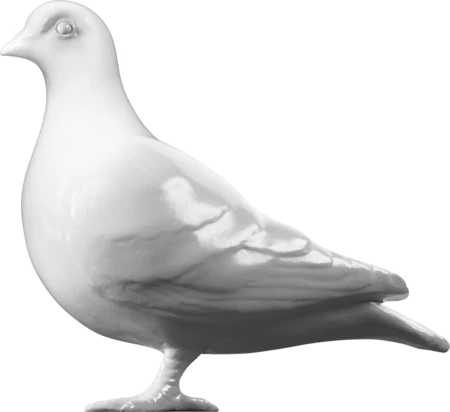Social History — 1797-1798
Pelican Life Insurance Company entablature, 1797-1798
This artificial stone sculptural group was made at Eleanor Coade’s Lambeth manufactory. It stood above the entrance of the Pelican Life Insurance Office at 70 Lombard Street in the City of London. A Roman heroic figure is shown holding a standard with a pelican on top, comforting distraught widows and mothers. The standard bears the letters 'PLIO' which stand for Pelican Life Insurance Office. This recalls the traditional Roman standard featuring an eagle and the letters 'SPQR' (Senate and the People of Rome). The allegorical figures suggest that the Company is timeless and offers dependents security through life insurance. The group was modelled by John de Vaere in 1797 after engravings by Lady Diana Beauclerk in the book 'The Fables of John Dryden'.
Eleanor Coade ran a successful artificial stone business in Lambeth. Coade stone, a type of stoneware, was a very strong and durable material that did not degrade or break easily. It was much cheaper than marble. It could also be shaped and modelled using moulds and patterns. Many leading architects used Coade stone for the decorative detailing of their buildings and structures. Eleanor Coade's factory made domestic items as well such as fireplaces and garden ornaments.
The Pelican Life Insurance Company was founded in 1793. Famous policy holders included Lady Emma Hamilton, William Pitt the younger, Thomas Stamford Raffles (the founder of Singapore), Lord Byron and Percy Bysshe Shelley. In 1915 this group of sculptures was moved to the Sherborne Lane entrance of the Phoenix Assurance Company's offices in King William Street. It was then given to the London County Council in 1934. The group was later housed for a time at the Geffrye Museum, then in the garden at the Horniman Museum, before it was transferred to Museum of London in 1999.
- Category:
- Social History
- Object ID:
- 2001.63
- Object name:
- Pelican Life Insurance Company entablature, 1797-1798
- Object type:
- Artist/Maker:
- Vaere, John de, Coade, Eleanor, Beauclerk, Diana, Lady
- Related people:
- Related events:
- Related places:
- Production date:
- 1797-1798
- Material:
artificial stone, Coade stone
- Measurements/duration:
- H 3000 mm (approx), L 5000 mm (approx)
- Part of:
- —
- On display:
- —
- Record quality:
- 100%
- Part of this object:
- —
- Owner Status & Credit:
Permanent collection
- Copyright holder:
digital image © London Museum
- Image credit:
- —
- Creative commons usage:
- —
- License this image:
To license this image for commercial use, please contact the London Museum Picture Library.
